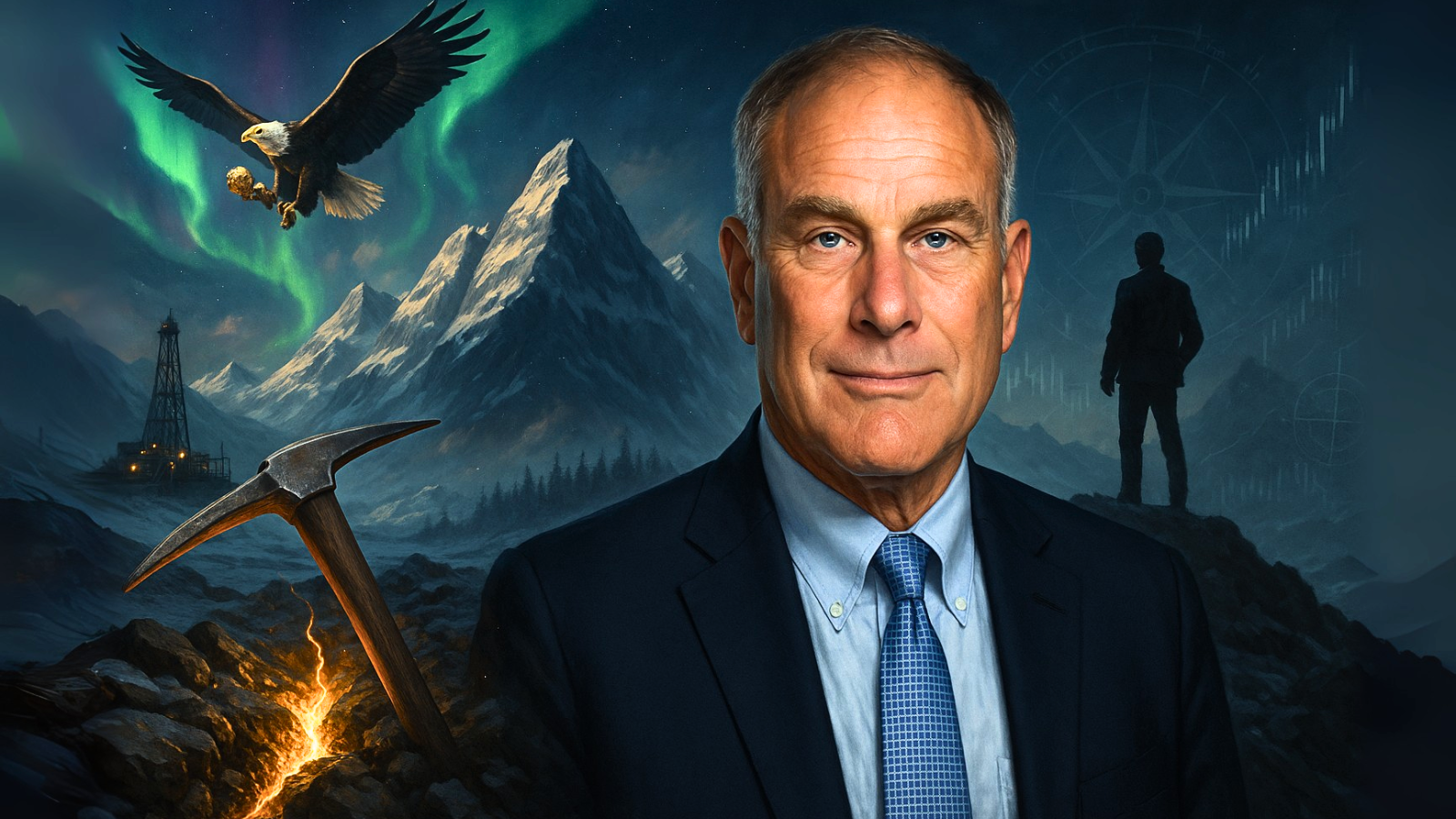Original Article: https://www.juniorstocks.com/yukon-or-bust-rick-rule-s-latest-investment-thesis
Frontier fortunes and investor risks collide in Canada’s untamed Yukon, where Rick Rule’s Investment Newsletter dissects discovery, disaster, and opportunity.

The Yukon is a land of staggering contrasts, where towering peaks, rolling rivers, and dense pine forests hide an immense geological prize. For investors, this northern expanse of Canada represents both untapped promise and sobering cautionary tales. In his latest Rule Investment Newsletter, Rick Rule reminds readers why the Yukon has captivated explorers for generations and why disciplined investors should pay attention to the territory’s unfolding story.
The Allure of Untapped Riches
Yukon remains one of the least explored mining jurisdictions in the world. This is no small fact in an age when new large-scale discoveries are becoming rare. Over 20 million ounces of gold have been defined in a narrow stretch of the Tombstone Belt, placing the region alongside some of the world’s most promising exploration fronts. Banyan Gold and Snowline Gold alone have outlined deposits exceeding seven million ounces each, proof that Yukon can host not just one but several district-scale systems.
Investors are drawn to the scale. The idea that multiple five-million-ounce discoveries may lie hidden beneath Yukon’s rugged surface is intoxicating for majors searching for multi-decade projects. Rick Rule emphasizes that scarcity drives value. The global mining industry is desperate for new deposits, and Yukon continues to deliver.
The Whiplash of Investor Sentiment
But the path is never smooth. The bankruptcy of Victoria Gold following the heap leach failure at its Eagle mine in 2024 rattled investor confidence. Overnight, explorers across the territory saw their valuations collapse, not because of their own technical failings but because markets feared Yukon itself might be unworkable. Rule notes this cycle of euphoria and despair is the very fabric of resource investing. Weak hands exit in panic while disciplined capital waits patiently for clarity.
The report into Eagle’s collapse concluded that heap leaching was not fundamentally flawed, but poorly executed. That distinction matters. Banyan’s shift toward mill-based processing, focusing on higher-grade zones at Aurmac, was partly informed by this lesson. For investors, the rebound in Yukon explorer share prices after the initial shock illustrates a deeper truth: geology doesn’t change, sentiment does.
Capital Flows Return
Despite the turbulence, capital is flowing back into the territory. Yukon explorers raised nearly C$200 million in 2024 and are on track to match that pace this year. Rule’s own portfolio has benefitted. Rackla Metals and Sitka Gold have soared more than 400 percent in the past twelve months, a testament to the market’s hunger for early-stage discovery potential.
Majors are circling. B2Gold’s stake in Snowline, Agnico Eagle’s position in White Gold, and Rio Tinto’s strategic interest in Western Copper & Gold demonstrate that the big players still view Yukon as fertile hunting ground. Yet Rule cautions that not every corporate investment turns into a mine. Goldcorp’s much-hyped acquisition of Kaminak’s Coffee project still sits undeveloped under Newmont’s ownership, now up for sale. Investors, Rule advises, must separate geological reality from market mythology.
The Standout Projects
Several companies emerge as central characters in Yukon’s investment story. Banyan Gold’s Aurmac, with 7.7 million ounces outlined, is pushing toward a mill-based PEA that could deliver 300,000 ounces of annual production. Snowline’s Valley deposit, with its high grades and extraordinary intercepts, is already being spoken of as one of Canada’s largest future mines. Rackla Metals is testing whether the Tombstone Belt’s golden reach stretches into the Northwest Territories. Sitka Gold, through aggressive drilling, is assembling a land package that could define a new district. Fireweed Metals, armed with U.S. Department of Defense funding, is pushing tungsten and zinc into the spotlight at Mactung and Macpass. Gladiator Metals is reviving Whitehorse’s forgotten copper belt. Western Copper’s Casino project, meanwhile, remains a giant waiting for infrastructure and cheap power to make it viable.
Rule is clear that scale, metallurgy, and location matter most. Projects with infrastructure advantages, high-grade cores, and district potential will draw the majors when consolidation sweeps through.
The Infrastructure Dilemma
Infrastructure is Yukon’s Achilles heel. Power shortages and road access remain critical obstacles. The territory’s hydro grid is stretched thin, forcing both Snowline and Banyan to model diesel-powered operations. Western Copper plans to use LNG for Casino, but the economics remain marginal compared to the cheap, clean power majors demand. Ottawa’s pledge to study a Yukon–British Columbia grid intertie is welcome, but billions of dollars and years of negotiation stand in the way.
Rule’s message is blunt: geology alone does not make a mine. Without roads, power, and First Nations alignment, even the richest deposits can languish. Investors must weigh these realities carefully.
The Shadow of Victoria Gold
Victoria’s downfall casts a long shadow. Once Yukon’s flagship producer, the company’s bankruptcy underscores both the risks and the stakes. Its Eagle mine, along with the Raven deposit and Brewery Creek, are now up for grabs through PriceWaterhouseCoopers. Whoever takes control will instantly become Yukon’s dominant player, with the power to reshape sentiment across the territory. Rule argues that if a deep-pocketed major steps in, it will be a vote of confidence in Yukon that lifts all boats.
The government has every incentive to make this happen. With Victoria gone, Yukon has lost its largest taxpayer. Federal transfers keep the territory afloat, but long-term sustainability requires mining revenues. A successful sale of Eagle would not only restore production but also reassure global investors that Yukon is open for business.
Rick Rule’s Yukon Thesis
Rick Rule has spent a career navigating the booms and busts of resource investing. His Yukon thesis distills to a simple idea: the territory is a frontier with world-class potential, but only disciplined investors will thrive. Those who buy when fear dominates, and sell when euphoria peaks, will capture the asymmetric rewards. Projects like Snowline, Banyan, Rackla, and Sitka may not all succeed, but even one more world-class discovery could be transformative.
Yukon, he argues, is not just a bet on geology but on human resilience, capital discipline, and the slow grind of infrastructure development. For investors willing to stomach volatility, it is precisely the kind of jurisdiction where fortunes are made.
Conclusion
The Yukon story is still being written. It is a place of giants and ghosts, of billion-dollar valuations and sudden bankruptcies, of soaring drill intercepts and stubborn logistical challenges. Rick Rule’s Investment Newsletter paints a vivid picture of both promise and peril. For those who can navigate sentiment swings and keep their eyes on the rocks beneath the tundra, Yukon remains one of the most compelling frontier plays on the planet.




